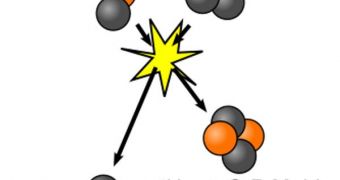The Vancouver, Canada-based start-up General Fusion has recently announced that it will begin work on a new type of nuclear fusion reactor as soon as it can pull enough funds together to do so. Experts from the company believe that they could have a working prototype within the next ten years, and that the entire project could cost less than $1 billion to complete. Thus far, General Fusion has managed to secure $13.5 million from both public and private sources, and hopes are high that work will soon begin at the new reactor.
Other facilities designed to trigger sustainable nuclear fusion, such as the International Thermonuclear Experimental Reactor (ITER), in France, have costs running up to $14 billion, though there are no guarantees that their method of obtaining the elusive reaction are any better than others. According to representatives in the industry, the method employed by General Fusion can best be described as magnetized target fusion. Despite being, in the scientists' own words, quite a long shot, the method is feasible, and it could work.
The new reactor project does not incorporate tokamaks – the large, expensive, superconducting magnets that ITER relies on –, nor does it make use of extremely powerful lasers, such as the National Ignition Facility at the Lawrence Livermore National Laboratory does. Rather, its creators say that using brute mechanical forces to compress a plasma target so hard that the nuclei inside it fuse may work if advanced, digital-control technologies are thrown in the picture. They argue that, more than 30 years ago, such control techniques were unheard of.
According to the plans General Fusion released, the fusion reactor will contain some liquid mixture of lithium and lead inside a three-meter (ten-foot) metallic sphere. On the outside, 220 pneumatically controlled pistons would constantly ram the sphere at speeds of 100 meters per second. Inside the reactor, the liquid will be spun around, until a cavity naturally forms in it. Then, from top and bottom, two donut-shaped plasma rings held together by spheromaks – self-generated magnetic fields – will be injected in the mix.
As the lithium-lead solution spins, and the plasma rings are brought within short distances of each other, the pistons begin to ram the exterior of the sphere. This would send shock waves through the interior, which would be amplified by plasma. Scientists hope that these waves would essentially collide the two plasma rings together and create nuclear fusion. If this happens, they plan to use half of the energy to create electricity, while the other half would be employed to recharge the pistons, Technology Review informs.

 14 DAY TRIAL //
14 DAY TRIAL //